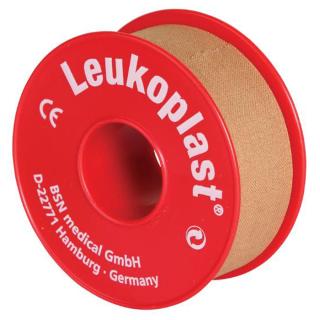Een wonddrukverband is veel gebruikt verbandmiddel in de EHBO en zit standaard in een EHBO-koffer. Het wordt gebruikt om ernstige bloedingen te stoppen. In dit artikel bespreken we wat een wonddrukverband is, het doel ervan, welke materialen je nodig hebt om het aan te leggen, hoe je het correct aanlegt en hoe lang het mag blijven zitten.
Wat is een wonddrukverband?
Een wonddrukverband is een verband dat wordt gebruikt om druk uit te oefenen op een wond. Het doel is om bloedingen te stelpen en het genezingsproces te bevorderen. Dit type verband bestaat uit meerdere onderdelen.
Zo heb je wondverband dat bestaat uit:
- Een snelverband
- Een gaaskompres, verbandwatten en hydrofiele zwachtel. Deze combinatie zorgt ervoor dat het wonddrukverband effectief druk uitoefent op de wond en het omliggende weefsel.
Wat is het doel van een wonddrukverband?
Het doel van een wonddrukverband is om bloedingen te stoppen en de wond te beschermen. Het wordt gebruikt in situaties waar er sprake is van ernstige bloedingen die niet gemakkelijk te stoppen zijn met een gewoon verband of pleister.
Een wonddrukverband helpt om het bloeden te verminderen, voorkomt verdere schade en ondersteunt het genezingsproces. Het kan ook worden gebruikt om de pijn te verminderen door de wond te stabiliseren en de druk gelijkmatig te verdelen.
Wat heb je nodig voor het aanleggen van wonddrukverband?
Wonddrukverband bestaat uit de volgende materialen:
- Gaaskompres: dit is om de wond te beschermen.
- Verbandwatten: dit is om het bloed op te nemen en de druk gelijkmatig te verdelen.
- Hydrofiele elastische zwachtel: om druk uit te oefenen en het geheel stevig te bevestigen.
- Kleefpleister: om het verband te fixeren.
Drukverband aanleggen, zo doe je dat!
Het correct aanleggen van een wonddrukverband is belangrijk voor het juiste effect. Volg de onderstaande stappen om een wonddrukverband aan te leggen:
Voorbereiding: Zorg ervoor dat je handen schoon zijn en dat je alle benodigde materialen bij de hand hebt, zoals een gaaskompres, verbandwatten en een hydrofiele zwachtel. Of eventueel alleen een snelverband. Naast deze materialen heb je eventueel nog een verbandschaar nodig.
Aanbrengen van het gaaskompres: Plaats het absorberende gaaskompres direct op de wond. Dit kompres helpt bij het absorberen van bloed en biedt een beschermende laag.
Aanbrengen van verbandwatten: Leg bovenop het gaaskompres de verbandwatten en houd deze op zijn plaats.
Aanbrengen van de hydrofiel zwachtel: Wikkel de hydrofiele zwachtel over de combinatie van gaaskompres en verbandwatten. Deze zwachtel moet strak genoeg zitten om druk uit te oefenen, maar niet zo strak dat het de bloedsomloop belemmert. Wikkel de zwachtel in overlappende lagen, beginnend vanaf de plek het dichtst bij het hart en werk naar beneden toe.
Controleren van de pasvorm: Zorg ervoor dat het wonddrukverband goed zit en dat er geen tekenen zijn van belemmerde bloedsomloop, zoals verkleuring of tintelingen in de ledematen. Pas zo nodig de spanning van de zwachtel aan.
Hoe lang mag een wonddrukverband blijven zitten?
Wonddrukverband mag 3 tot 5 dagen blijven zitten. Het is belangrijk om het verband regelmatig te controleren op tekenen van belemmerde bloedsomloop of toenemende pijn. Bij twijfel is het altijd verstandig om medische hulp in te schakelen. Als er sprake is van ernstige verwondingen, neem dan onmiddellijk contact op met een arts of bel 112.
Medische disclaimer
De tekst is gecontroleerd op juistheden door een EHBO specialist. Echter de informatie in dit artikel is bedoeld voor informatieve doeleinden. Behandelingen dienen altijd uitgevoerd te worden door een getrainde professional zoals een BHV’er en EHBO’er. Bij ernstige verwondingen, bel direct 112.






